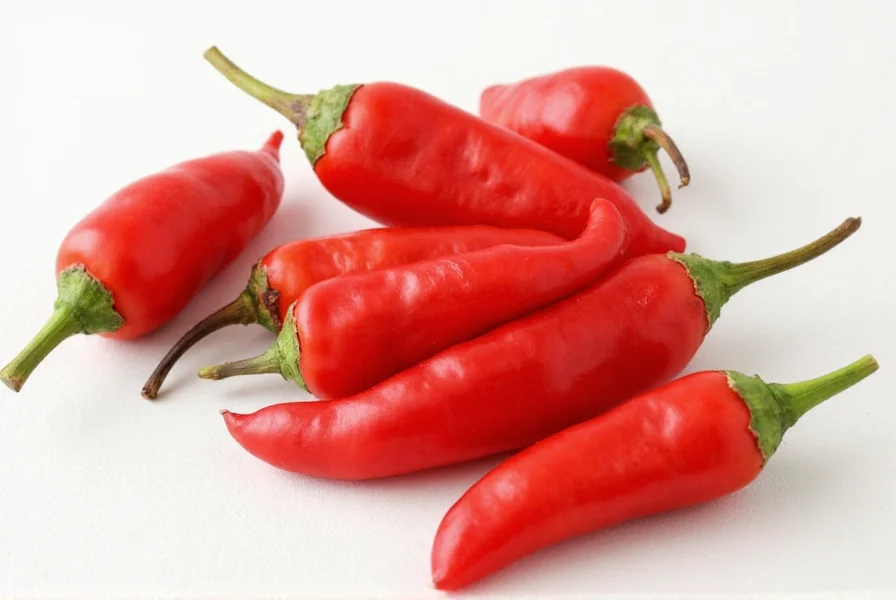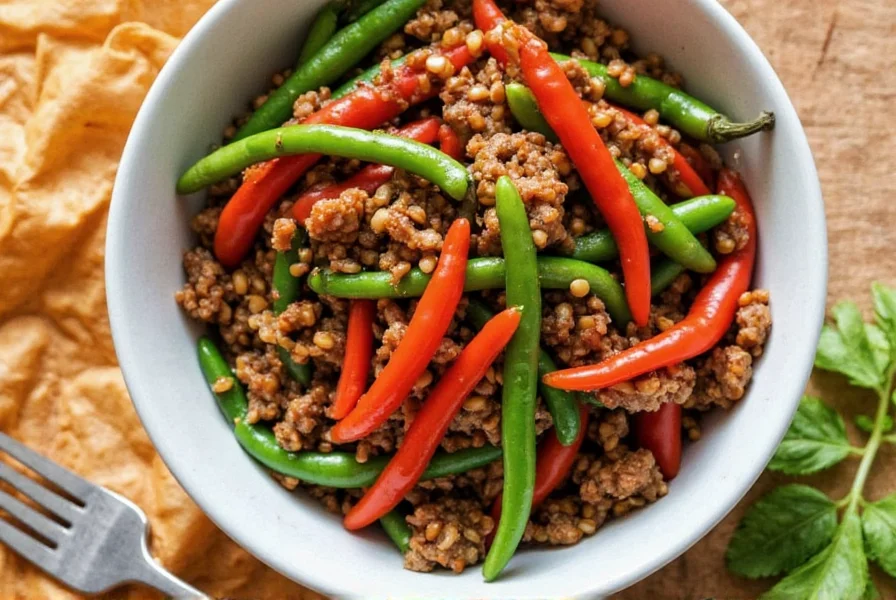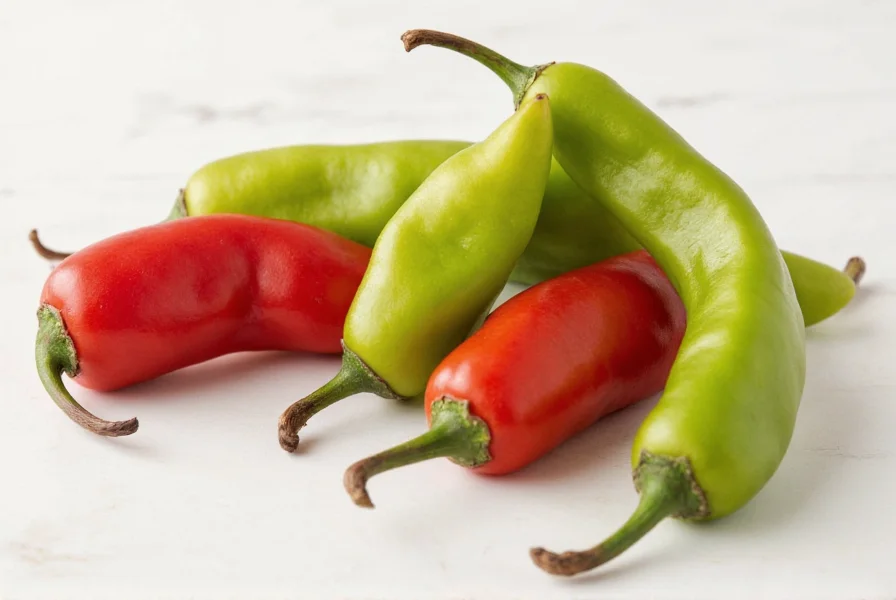Ancho Peppers 101: Spicy, Sweet, and Smoky – Everything You Need to Know!

If you're diving into the world of spices or just looking to spice up your kitchen game, chili ancho peppers should definitely be on your radar. These wrinkled, dark red dried chilies are more than just a pretty face in your pantry—they pack a flavor punch that’s both sweet and smoky, with just the right amount of heat.
In this post, we'll walk you through everything you need to know about ancho peppers, from their origin and flavor profile to how to use them in your cooking and where to buy the best ones. So whether you’re a seasoned chef or a curious home cook, get ready for a deep dive into one of the most beloved ingredients in Mexican cuisine!
Table of Contents
- The Origin of Ancho Peppers
- Flavor Profile: Sweet, Fruity, and Slightly Smoky
- Top 5 Ways to Use Ancho Peppers in Your Kitchen
- Buying Guide: How to Choose the Best Ancho Peppers
- Storing and Preserving Your Anchovies (Chilies, That Is)
- Ancho Pepper Substitutes: When Life Gives You... Not Enough Anchos
- FAQs: Answering All Your Burning Questions
- Final Thoughts: Spice Up Your Life with Ancho Peppers
The Origin of Ancho Peppers
The ancho pepper is the dried version of the poblano pepper. Poblanos are originally from Mexico, particularly from the state of Puebla—yes, it’s where they got their name! When fresh, poblanos are mild and slightly earthy, but once dried and transformed into anchos, their flavor becomes richer, deeper, and more complex.
They’ve been used for centuries in traditional Mexican dishes like moles, salsas, and stews. In fact, ancho peppers are one of the 'holy trinity' of dried chilies used in mole sauces, along with mulato and pasilla peppers. Their unique flavor makes them indispensable in many regional recipes.
Flavor Profile: Sweet, Fruity, and Slightly Smoky
If you’re imagining ancho peppers as fiery hot, think again. While they do have some heat, anchos fall on the milder end of the spice scale, usually ranging between 1,000–2,000 on the Scoville Heat Unit (SHU) scale. For comparison, jalapeños can range from 2,500 to 8,000 SHU, so anchos are actually quite tame.
Taste Breakdown:
- Sweetness: Think raisins or dried plums.
- Smokiness: Light, earthy smoke, not overpowering.
- Heat: Low to medium, perfect for those who prefer subtle warmth.
- Fruitiness: Hints of cherry and fig notes come through, especially when toasted.
This combination makes them incredibly versatile and easy to integrate into a wide variety of dishes without overwhelming the palate.
Top 5 Ways to Use Ancho Peppers in Your Kitchen
- Making Mole Sauce: The star role for anchos. They form the base of many mole recipes, especially mole poblano.
- Creating Flavorful Rubs: Toast and grind anchos with cumin, garlic powder, and cinnamon for a killer dry rub on meats or roasted veggies.
- Blending into Salsas: Combine rehydrated anchos with tomatoes, onion, garlic, and lime for a rich, smoky salsa.
- Spicing Up Soups & Stews: Add a few soaked and chopped anchos to enrich broth-based soups or hearty bean stews.
- Infusing Oils or Vinegars: Whole dried anchos can be steeped in oil or vinegar for a spicy-sweet infusion that adds depth to dressings or marinades.
Buying Guide: How to Choose the Best Ancho Peppers
Not all ancho peppers are created equal. Whether you’re shopping at a local market or ordering online, here are some key factors to consider:
| Feature | What to Look For | Why It Matters |
|---|---|---|
| Appearance | Deep reddish-brown color, slightly soft texture | Avoid overly brittle or discolored peppers—they may be old or improperly stored. |
| Size | Moderate size (about 4–6 inches long) | Too large may mean less concentrated flavor; too small might lack flavor depth. |
| Smell | Sweet, earthy aroma with hints of smoke | Faint or musty smell indicates age or poor storage. |
| Packaging | Airtight containers or vacuum-sealed bags | Proper packaging preserves freshness and oils that carry flavor. |
| Origin | Mexico (especially Puebla or Oaxaca) | Authentic Mexican anchos tend to have better flavor profiles due to terroir and traditional drying methods. |
Top Picks for Ancho Peppers
- El Mexicano Ancho Peppers
- Features: Whole, naturally sun-dried peppers from Puebla
- Best For: Making homemade moles and sauces
- Target Audience: Home cooks and culinary enthusiasts
- Occasion: Weeknight dinners or special celebrations
- Goya Ancho Peppers
- Features: Pre-cleaned, stemless, packaged for convenience
- Best For: Quick prep without fuss
- Target Audience: Busy cooks and meal-preppers
- Occasion: Everyday meals and simple spice blends
- La Morenita Premium Ancho Chiles
- Features: Organic, fair-trade certified, sustainably sourced
- Best For: gourmet-level cooking and ethical sourcing advocates
- Target Audience: Eco-conscious consumers and foodies
- Occasion: Dinner parties and themed menus
Storing and Preserving Your Anchovies (Chilies, That Is)
Once you’ve got your hands on some quality anchos, it's important to store them properly to maintain flavor and shelf life. Here’s how to keep them tasting great for months:
- Keep Them Dry: Store anchos in a cool, dark, and dry place. A pantry or cupboard works perfectly.
- Airtight Containers: Transfer them from plastic bags to glass jars or sealable Mylar pouches to prevent moisture and pests.
- Freeze for Longevity: If you want to extend their shelf life even further, store them in the freezer in a sealed bag.
- Use Within: For optimal flavor, use within 6–12 months.
Ancho Pepper Substitutes: When Life Gives You... Not Enough Anchos
Ran out of anchos? No problem. Here are some excellent alternatives depending on what flavor you’re after:
| Substitute | Flavor Similarity | When to Use | Notes |
|---|---|---|---|
| Mulato Pepper | Very close | For richer, sweeter, and more chocolate-like flavor in sauces | Darker and slightly sweeter than anchos |
| Pasilla Pepper | Moderate similarity | Great for moles and stews | More prune-like flavor and slightly hotter |
| Guajillo Pepper | Less sweet, more acidic | For tangy, bright flavors in salsas and marinades | Hotter than anchos and commonly used in adobo sauces |
| Paprika (Sweet or Smoked) | Only similar in color and mildness | When you don’t care about heat but want a reddish hue and light smokiness | No real substitute for flavor depth |
FAQs: Answering All Your Burning Questions

Are Ancho Peppers Hot?
Relatively mild. Most fall between 1,000–2,000 SHU, making them ideal for those who enjoy flavor over intense heat.
Can I Eat Ancho Peppers Raw?
Technically yes, but they’re tough and leathery when raw. It’s best to toast, soak, or blend them before eating.
What's the Difference Between Poblano and Ancho Peppers?
Poblanos are fresh, anchos are dried. Same pepper, different stage of life!
How Do I Rehydrate Ancho Peppers?
Soak them in warm water or broth for 20–30 minutes until softened. Drain and remove seeds/stems before using.
Can I Make My Own Ancho Peppers?
Absolutely! Simply roast and dry fresh poblanos under the sun or in a dehydrator. But beware—it takes time and proper ventilation to avoid mold.
Final Thoughts: Spice Up Your Life with Ancho Peppers
Ancho peppers are more than just a dried chili—they’re a gateway to rich, layered flavor without the burn. Whether you're simmering up a classic mole, spicing up your weeknight dinner, or exploring the vibrant world of Mexican cuisine, anchos deserve a permanent spot in your spice collection.
So go ahead, grab a few, and let your taste buds take a flavorful journey south of the border. After all, life’s too short for bland food—and with ancho peppers around, there’s no excuse for that!











 浙公网安备
33010002000092号
浙公网安备
33010002000092号 浙B2-20120091-4
浙B2-20120091-4